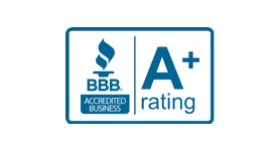
What is a Comprehensive Site Content Audit? Exploring Benefits and Strategies
A comprehensive site content audit involves a thorough analysis of all the content on your website, including text, images, videos, and other media. It assesses the quality, relevance, and effectiveness of your content in order to identify areas for improvement and optimization. This process helps uncover opportunities for enhancing user experience, optimizing SEO performance, and aligning your content strategy with your business goals.

Defining a Site Content Audit
When it comes to managing and optimizing your website’s content, one of the most valuable tools in your arsenal is a site content audit. But what exactly does this term mean? Simply put, a site content audit is a systematic evaluation and analysis of all the content existing on your website. It involves going through every page, blog post, image, video, and any other form of content to assess its quality, relevance, and effectiveness.
Think of a site content audit as a comprehensive health check-up for your website’s content. It helps you identify strengths, weaknesses, and areas that need improvement. By examining each element and its performance within the overall structure of your site, you gain valuable insights into how well your content is serving your business goals.
A site content audit typically involves reviewing various aspects such as:
- Website structure and navigation
- Page load speed
- Metadata (titles, descriptions, alt tags)
- On-page SEO elements (headings, keywords usage)
- Content quality, relevance, and engagement metrics
- User experience and design elements
- Conversion opportunities
Purpose and Objectives of Content Audits
The purpose of a comprehensive site content audit goes beyond merely evaluating the quality and performance of your website’s content. While it certainly helps identify areas for improvement or optimization, it serves broader objectives that contribute to the long-term success of your digital presence.
By conducting a site content audit, you can:
- Assess Content Relevance: One objective is to determine if the existing content aligns with your target audience’s needs and expectations. Understanding which types of content resonate with your audience helps refine your future content creation efforts.
- Identify Gaps or Redundancies: Examining each piece of content allows you to identify gaps in your website’s coverage of important topics. This insight enables you to create valuable content that fills those gaps. Additionally, a content audit helps eliminate redundant or outdated content that may be confusing or diluting your website’s message.
- Improve SEO Performance: A thorough review of metadata, keywords, and other on-page SEO elements ensures that your website is optimized for search engines. Identifying areas where improvements can be made helps enhance your organic search visibility and attract more relevant traffic.
- Enhance User Experience: By examining the design, structure, and navigation of your site, a content audit allows you to improve the overall user experience. This involves ensuring intuitive navigation, seamless access to information, and a visually appealing interface that keeps users engaged.
- Increase Conversion Opportunities: Evaluating the effectiveness of call-to-actions (CTAs), landing pages, and conversion funnels helps optimize your website for lead generation or sales. Identifying areas where conversions could be improved allows you to make data-driven modifications to maximize results.
Imagine conducting a site content audit for an e-commerce website selling skincare products. Through the audit, you discover that many product pages lack detailed descriptions and customer testimonials. By addressing this gap and providing compelling product information, you can increase trust in potential customers and boost sales.
As we have now explored the purpose and objectives behind conducting a comprehensive site content audit, it’s time to dive deeper into the key elements involved in this process.
Elements of a Comprehensive Content Audit
A comprehensive content audit is a thorough examination of the existing content on a website to evaluate its effectiveness and identify areas for improvement. To conduct a successful audit, it’s important to consider several key elements.
One crucial element is content relevance. This involves assessing whether the content aligns with the website’s goals, target audience, and current market trends. Outdated or irrelevant content can hinder user engagement and diminish the website’s overall performance.
For instance, imagine a fashion blog that still features articles about outdated fashion trends from a decade ago. Such content may not resonate with the current audience, leading to decreased traffic and user interest.
Another significant aspect is content organization. It examines how well the website’s content is structured and categorized, making it easy for users to navigate and find the information they need. A poorly organized website can result in frustrated visitors who struggle to locate relevant content.
In addition, content optimization plays a vital role in a comprehensive audit. This involves evaluating whether the content is optimized for search engine visibility by incorporating relevant keywords, meta tags, headings, and other on-page SEO elements. Proper optimization can enhance organic search rankings and drive more traffic to the website.
Furthermore, an effective audit includes an evaluation of content accuracy. This ensures that all information presented is up-to-date, reliable, and trustworthy. Inaccurate or outdated content can damage the website’s credibility and undermine its authority within the industry.
Lastly, analyzing content performance metrics is essential in determining the success of individual pieces of content. Metrics such as page views, bounce rates, time spent on page, and conversion rates provide insights into which pieces are resonating with users and driving desired outcomes. These metrics guide decisions on updating or repurposing existing content.
Analyzing the Quality and Clarity of Current Content
When conducting a comprehensive site content audit, evaluating the quality and clarity of existing content is crucial. High-quality content that is clear, concise, and valuable to the target audience can greatly enhance user experience and drive desired outcomes.
Analyzing content quality involves assessing its relevance, accuracy, depth, and uniqueness. Relevant content should address the needs and interests of the target audience, providing them with valuable information or solutions to their problems. Accuracy ensures that the information presented is factual, up-to-date, and supported by reliable sources.
For instance, if a website offers financial advice, it should provide accurate figures, explanations of complex concepts in simple terms, and cite credible sources for further reference.
Content depth refers to how comprehensive and detailed the information provided is. In some cases, longer-form content that delves deeply into a topic may be more appropriate. On the other hand, shorter pieces may be ideal for conveying quick tips or news updates.
Uniqueness is also paramount as plagiarized or duplicated content not only damages credibility but can also result in penalties from search engines.
Clarity is equally important as it determines how easily users understand and comprehend the information presented. Well-structured paragraphs, headings, bullet points, and logical flow contribute to clarity. Avoiding jargon or complex terminology ensures that content can be easily understood by a broader audience.
Remember: High-quality and clear content creates a positive impression on visitors while driving engagement and conversions.
Benefits of a Comprehensive Content Audit
Conducting a comprehensive content audit is a critical step in optimizing your website and improving its performance. Let’s explore the benefits that come with conducting such an audit.
- Identify Content Gaps: A content audit allows you to evaluate your existing content and identify any gaps in your website. By identifying topics or areas that are lacking in sufficient coverage, you can create new content that fills those gaps and provides valuable information to your audience. This can help improve user experience and engagement on your site.
For instance, let’s say you have an e-commerce website selling various beauty products. Through a comprehensive content audit, you realize that you haven’t created any content specifically targeting skincare routines for different skin types. By identifying this gap, you can develop new articles, videos, or guides tailored to each skin type, catering to a wider range of customers’ needs.
- Improve SEO Performance: An effective content audit allows you to assess the quality and relevance of your existing content in relation to search engine optimization (SEO). By analyzing keyword usage, meta tags, headers, and other SEO elements, you can ensure that your content aligns with best practices and is optimized for higher visibility in search engine results pages.
Consider SEO as the compass leading potential visitors to your website. Your comprehensive content audit acts as the map ensuring that each piece of content has a clear path to attract organic traffic.
- Enhance User Experience: A thorough content audit enables you to evaluate how well your current content meets the needs and expectations of your target audience. By understanding what kind of information users are seeking and addressing any gaps or inconsistencies in your content, you can improve the overall user experience on your website.
Imagine you’re managing a travel blog. Through a comprehensive content audit, you discover that your destination guides lack practical tips and recommendations on local transportation options. By adding detailed information about public transport, taxi services, or car rentals in each guide, you can enhance the user experience for travelers who are seeking convenience and ease of navigation.
- Streamline Content Strategy: A content audit allows you to evaluate the performance of various types of content on your website. By analyzing metrics such as page views, bounce rates, social shares, and conversion rates, you can determine which content pieces are resonating with your audience and driving engagement. This valuable insight helps you refine and tailor your content strategy to focus on what works best for your business goals.
Now that we understand the benefits of conducting a comprehensive site content audit, let’s explore some effective strategies to carry out this crucial process.
Strategies for Conducting a Comprehensive Site Content Audit
Refreshing your website’s content requires careful planning and execution. A comprehensive site content audit involves several strategies that will ensure a thorough evaluation of your existing content. Let’s dive into some key strategies:
- Inventory Your Content: Begin by compiling a detailed inventory of all the content on your website. This includes blog posts, product descriptions, landing pages, videos, images, and any other type of content. Organize this inventory using categories such as topic, type, publishing date, and engagement metrics.
- Evaluate Content Quality: Assess the quality of each piece of content in terms of accuracy, relevance, readability, grammar, and overall value to your target audience. Determine if any outdated or low-performing content needs to be updated or removed.
Once you’ve evaluated the quality of your existing content, it’s time to take a deeper look into its performance and alignment with your business goals.
Analyze Performance Metrics: Dive into analytics data to understand how well each piece of content is performing. Look at metrics such as page views, time on page, bounce rates, and conversion rates. Identify high-performing content that can be repurposed or promoted further, and pinpoint underperforming content that may need improvement.
SEO Assessment: Evaluate the SEO elements of your content, such as keyword usage, meta tags, headers, and URLs. Identify opportunities to optimize your content for better search engine visibility.
Content Gap Analysis: Identify any gaps or areas of opportunity in your current content strategy. Determine if certain topics are being overlooked or if there are new trends or industry developments that you should incorporate into your content plan.
By following these strategies, you’ll gain valuable insights into your website’s content landscape and be well-equipped to make informed decisions about enhancing and updating your digital presence.






